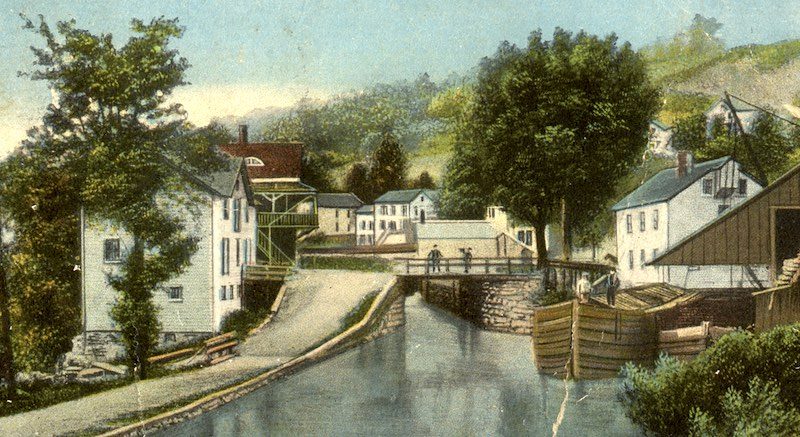
Five Locks Walk
Fall 2019
It is difficult to imagine how William and Maurice Wurts developed the concept for and then actually constructed the Delaware & Hudson (D&H) Canal System that ran from Honesdale, PA, to Kingston, NY, using the power and technology of the day–primarily men & draft animals and picks & shovels. The Wurts brothers’ main objective had been to bring Pennsylvania’s anthracite coal to the East Coast. They did so in three years.
But where to start? You could begin with the legal and political challenges of stringing together ownership of the land needed. Or should you start with the financing of America’s first private million-dollar project? Consider for a moment just the mining of the Shawangunk conglomerate, the heart-breaking tough stone that would line the canal’s walls.
You could veer off, like so many spurs of the canal, to the potential return on the Wurts’ investment paid by individual businesses the canal would service or make possible. In hindsight, we also could talk about the cement discovered because the canal channel cut through the limestone in Rosendale, unearthing that vast mineral wealth.
Constructing a 108-mile stone-lined ditch running through wilderness and the 108 locks necessary to accommodate the changing elevations in the terrain, and the word “daunting” has new meaning. Need we mention again they did it in three years?
Wander today along the Five Locks Walk in High Falls near the soon-to-be-opened new D&H Canal Museum, and you will know intuitively this was an amazing engineering project. The D&H Canal website states the canal… “was designated a National Historic Landmark in 1968. In 1999, the High Falls locks—16 through 20—were cleared and refurbished (to the extent possible). These five locks were built in 1850, as part of a new route designed to accommodate increased traffic and larger canal boats. This section also included a loading quay, still visible just past lock 16. The canal locks were constructed of Shawangunk conglomerate, an indigenous stone. Each lock measured 90’ long, 15’ wide, and 15’ deep, and provided an average change in elevation of 12.6’.”
See CanalMuseum.org for more information and for visiting the current museum.
